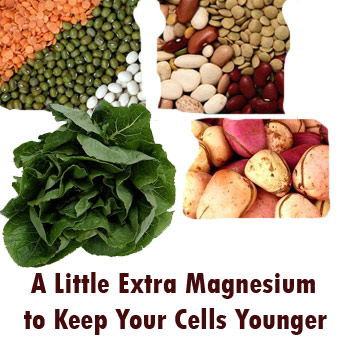Beautiful story of true angels... I have never seen anyone who regretted this decision. It is the most selfless, heroic act, and I for one wouldn't be alive today if it wasn't for my organ donor!
By CAROLINE DIPPING
THE SAN DIEGO UNION-TRIBUNE
SAN DIEGO, Calif. --
Ted McCrow vowed he would never return to San Diego.
After his 17-year-old son, Sam, had a brain aneurysm while surfing at Mission Beach three years ago, McCrow of Vancouver, Wash., could not imagine ever coming back to the place where his family vacation turned so swiftly to tragedy. McCrow and his wife, Jasmine, were equally haunted by the hours that followed when Sam was declared brain-dead and they had to put into action Sam's long-standing wish to donate his organs.
Ted McCrow remained unswayed about his decision never to step foot in San Diego again, even when Jasmine returned here briefly last fall to meet one of the donor recipients. Only after seeing how cathartic the meeting was for his wife did Ted McCrow begin to consider the impossible.
On the third anniversary of their son's death, the McCrows did revisit the beach where their teenager collapsed. And tearfully, with daughters Kristen and Kaisa, they began a series of reunions with the four people who are alive today because of Sam.
One of the two donor recipients they met Friday was Xavier McLeod, a 6-year-old Lemon Grove boy who is now the healthy owner of one of Sam's kidneys.
"I will never get over the death of my son," Ted McCrow said haltingly, gripping a cup of water and occasionally leaning toward his wife, putting a hand on her shoulder. "But I love seeing him (Xavier) so healthy. I can't wait to hear about Xavier growing up."
Xavier instinctively went to Kristen's lap, where he sat for nearly the entire reunion that took place in the Mission Valley offices of Lifesharing, a division of UCSD Medical Center that provides organ recovery, donor family support and educational services.
Xavier was born with a kidney defect that required him to be on dialysis 10 hours a day, be fed through a machine and receive numerous injections. He had been on the organ waiting list his whole life.
On Friday, the McCrows also met Sandy Hintz, who received Sam's pancreas and his other kidney. When Hintz entered Lifesharing's conference room to meet the McCrows for the first time, she silently fell into hugs with them that lasted more than a minute.
The first thing Hintz said when she came up for air was, "Thank you for what you did."
Then out came the photographs. The McCrows showed a framed picture of Sam, his smile broad, his hair tousled. Hintz showed pictures of her 11 grandchildren.
Hintz, a local nurse who works with children, was an insulin-dependent diabetic for 30 years. She was in kidney failure and had been on three donor waiting lists around the country for more than two years when she got the midnight call on Aug. 6, 2007, to head to Scripps Green Hospital in La Jolla. By 6 o'clock the next morning, she was in surgery.
While recovering, not knowing their names or where they lived, Hintz wrote to the McCrows to express her gratitude. She sent the letter through Lifesharing.
"I have been recovering over the last month and doing well," Hintz wrote. "Both organs are functioning very well and I am insulin free with normal blood glucose for the first time in my life.
"I am grateful and honored to have been offered and given these organs of your beloved family member. Thank you for the gift of life. I will take great care of them."
During the reunion, Norm Lydiard of Phoenix, the recipient of both of Sam's lungs, called in to say how much he was looking forward to meeting the McCrows.
"It's almost criminal how well I'm doing," Lydiard said from Arizona.
The recipient of Sam's liver, Edgar Cachuela of Orange County, also planned to join the gathering.
For a long time, the McCrows did not respond to the "thank you" letters Lifesharing gave them from the recipients, and they declined invitations to come to San Diego for a reunion. Slowly, Jasmine McCrow warmed to the idea.
She talked with Valerie James, Xavier's mother, by phone on the anniversary of Sam's death, and she met James and Xavier in November at a nursing symposium here.
Seeing his wife handle these interactions helped Ted McCrow accept the invitation to bring his family to San Diego to mark his son's death.
"There is something very powerful about anniversaries," said Sharon Ross, community outreach manager for Lifesharing. "The first year, there is so much grief and anger.
"As time goes by you never forget, but that grief changes. Ted specifically came down here for the third anniversary to say his goodbyes and his hellos. After he met Xavier, he said, I'm open now to meeting the other recipients. "
One of the memories Ted McCrow keeps with him is the last day of his son's life and how much he loved San Diego and its surfing.
"As we were heading out to the beach that morning, he said to me, 'If I was to have to ever go, this is where I'd want to go,' " said Ted McCrow, recalling his son's words.
Sam's ashes have been spread here, in Guam and along the Oregon Coast.
"Maybe he is around here more than other parts of the country," said Jasmine McCrow. "I really feel like he is part of the universe. His love is always with us."
---
Information from: The San Diego Union-Tribune,
http://www.signonsandiego.com
Spread the word! Live Life then Give Life!!
Share


















